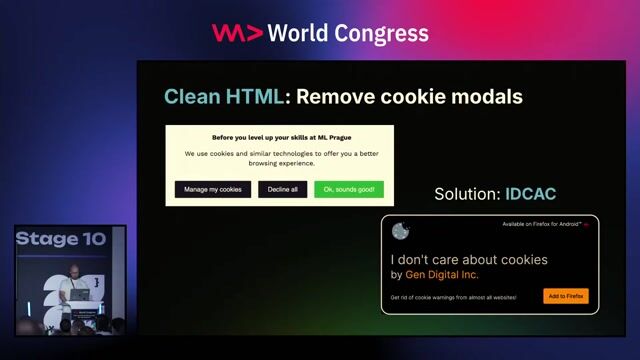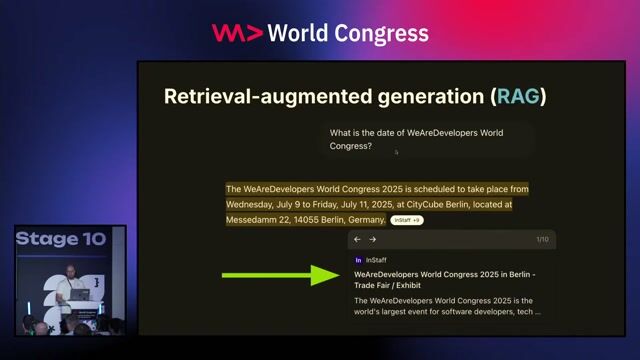Fili Wiese
Command the Bots: Mastering robots.txt for Generative AI and Search Marketing
#1about 2 minutes
Why robots.txt is crucial for managing AI and search bots
The robots.txt file is a foundational tool for controlling how AI models and search engines use your website's content, with incorrect usage risking financial loss.
#2about 2 minutes
The history and formalization of the robots.txt protocol
Originally a de facto standard from 1994, Google formalized the robots exclusion protocol into an official RFC in 2019 to standardize its use across the web.
#3about 3 minutes
What robots.txt can and cannot do for your website
The file controls crawling but not indexing, offers no legal protection against scraping or security for private files, and requires IP blocking for disobedient bots.
#4about 3 minutes
Correctly placing the robots.txt file on every origin
A robots.txt file must be placed at the root of each unique origin, which includes different schemes (HTTP/HTTPS), subdomains, and port numbers.
#5about 4 minutes
How server responses and HTTP status codes affect crawling
Server responses like 4xx codes are treated as 'allow all' for crawling, while 5xx errors on the robots.txt path are treated as 'disallow all' and can de-index your site.
#6about 3 minutes
File format specifications and caching behavior
Bots may cache robots.txt for up to 24 hours, only guarantee reading the first 512 kilobytes, and require UTF-8 encoding without a byte order mark (BOM).
#7about 3 minutes
Common syntax mistakes and group rule validation
Directives must start with a slash, query parameters require careful wildcard use, and rules like sitemaps must be placed outside user-agent groups to apply globally.
#8about 3 minutes
Optimizing crawl budget and managing affiliate links
Block affiliate tracking parameters in robots.txt to prevent search penalties and disallow low-value pages like Cloudflare challenges to preserve your crawl budget for important content.
#9about 1 minute
Using robots.txt to verify cross-domain sitemap ownership
By including a sitemap directive in your robots.txt file, you can prove ownership and instruct crawlers to find sitemaps located on different subdirectories or even different domains.
#10about 3 minutes
Controlling AI and LLM access to your website content
Use specific user-agent tokens like 'Google-Extended' and 'CCBot' in robots.txt to control which AI models can use your content for training.
#11about 4 minutes
Directives for Bing, AI Overviews, and images
Bing uses 'noarchive' meta tags instead of robots.txt for AI control, while opting out of Google's AI Overviews requires a 'nosnippet' tag, which is separate from blocking training.
Related jobs
Jobs that call for the skills explored in this talk.
Matching moments

40:33 MIN
Technical SEO strategies for LLMs and new crawlers
WeAreDevelopers LIVE – SEO, GEO, AI Slop & More

51:24 MIN
Strategies for preventing AI bots from scraping content
WeAreDevelopers LIVE - Is AI replacing developers?, Stopping bots, AI on device & more

13:59 MIN
The limitations of relying on Googlebot's JavaScript rendering
SEO in Angular? No big deal with SSR and Angular Universal

00:52 MIN
Cloudflare's new default to block AI training crawlers
Fireside Chat with Cloudflare's Chief Strategy Officer, Stephanie Cohen (with Mike Butcher MBE)

28:24 MIN
Comparing AI search results and the impact of AI crawlers
WeAreDevelopers Live: Browser Extensions, Honey Scam, Jailbreaking LLMs and more

24:52 MIN
Using AI as a tool to fight misinformation
The Four Horsemen of the Information Apocalypse: Taming the Wild West of Information Overload

04:44 MIN
Google Search now requires JavaScript to function
WAD Live 22/01/2025: Exploring AI, Web Development, and Accessibility in Tech with Stefan Judis

07:29 MIN
Cleaning messy HTML and scaling data extraction
How to scrape modern websites to feed AI agents
Featured Partners
Related Videos
 36:44
36:44ChatGPT vs Google: SEO in the Age of AI Search - Eric Enge
Eric Enge
WeAreDevelopers LIVE – SEO, GEO, AI Slop & More
Chris Heilmann, Daniel Cranney & Simon Cox
 31:12
31:12Level-Up Your Global Reach: Mastering HREFLANG for Developers
Fili Wiese
 25:17
25:17AI: Superhero or Supervillain? How and Why with Scott Hanselman
Scott Hanselman
 24:15
24:15Fireside Chat with Cloudflare's Chief Strategy Officer, Stephanie Cohen (with Mike Butcher MBE)
Stephanie Cohen & Mike Butcher
 19:20
19:20How to scrape modern websites to feed AI agents
Jan Curn
 33:51
33:51Exploring the Future of Web AI with Google
Thomas Steiner
 57:47
57:47Cracking the Code: Decoding Anti-Bot Systems!
Fabien Vauchelles
From learning to earning
Jobs that call for the skills explored in this talk.


AI Content Expert, Artificial General Intelligence
Amazon.com, Inc
Shoreham-by-Sea, United Kingdom
XML
HTML
JSON
Python
Data analysis
+1

AI Content Expert - English Speakers , Artificial General Intelligence
Amazon.com Inc.
The Hague, Netherlands
XML
HTML
Perl
JSON
Ruby
+3




Agentic AI Architect - Python, LLMs & NLP
FRG Technology Consulting
Intermediate
Azure
Python
Machine Learning

Automation testing with Robot Framework using Python programming language
Infosys Limited
€46K
DevOps
Python
Selenium
Agile Methodologies
+1
![datengetriebenes Marketing & AI-Tools"}}]},{"@context":"https://schema.org/","@type":"JobPosting","@id":"#jobPosting","title":"Data-Driven Marketing Manager](https://wearedevelopers.imgix.net/public/default-job-listing-cover.png?w=400&ar=3.55&fit=crop&crop=entropy&auto=compress,format)